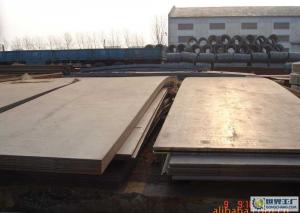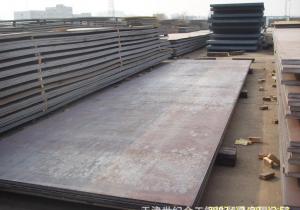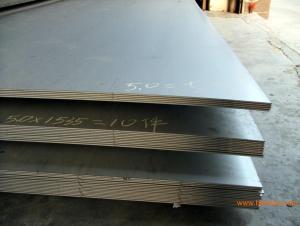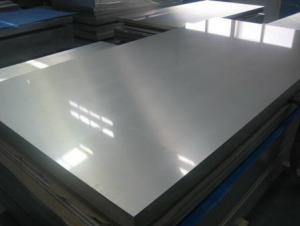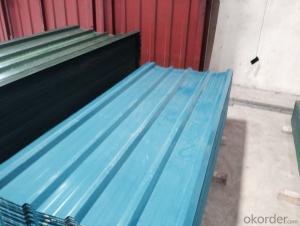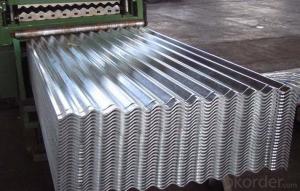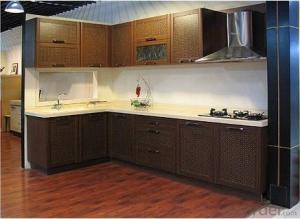Deformed Bar Hot Rolled High Quality 6mm-50mm ASTM or BS4449
- Loading Port:
- China Main Port
- Payment Terms:
- TT or LC
- Min Order Qty:
- -
- Supply Capability:
- -
OKorder Service Pledge
OKorder Financial Service
You Might Also Like
Product Description:
OKorder is offering Deformed Bar Hot Rolled High Quality 6mm-50mm ASTM or BS4449at great prices with worldwide shipping. Our supplier is a world-class manufacturer of steel, with our products utilized the world over. OKorder annually supplies products to European, North American and Asian markets. We provide quotations within 24 hours of receiving an inquiry and guarantee competitive prices.
Product Applications:
Deformed bar is widely used in buildings, bridges, roads and other engineering construction. Big to highways, railways, bridges, culverts, tunnels, public facilities such as flood control, dam, small to housing construction, beam, column, wall and the foundation of the plate, deformed bar is an integral structure material. With the development of world economy and the vigorous development of infrastructure construction, real estate, the demand for deformed bar will be larger and larger
Product Advantages:
OKorder's Deformed Bar Hot Rolled High Quality 6mm-50mm ASTM or BS4449 are durable, strong, and resist corrosion, exact size, regular package, chemical and mechanical properties are stable.
Main Product Features:
· Premium quality
· Prompt delivery & seaworthy packing (30 days after receiving deposit)
· Corrosion resistance
· Can be recycled and reused
· Mill test certification
· Professional Service
· Competitive pricing
Product Specifications:
Manufacture: Hot rolled
Grade: BS4449
Certificates: ISO, SGS, BV, CIQ
Diameter: 6mm,8mm,10mm,12mm,14mm,16mm,18mm,20mm,
22mm,25mm,28mm,32mm,36mm,40mm,50mm
Length: 6M, 9M,12M or as required
Packaging: Export packing, nude packing, bundled
Chemical Composition: (Please kindly find our chemistry of our material based on HRB500 as below for your information)
Grade | Technical data of the original chemical composition (%) | ||||||
C | Mn | Si | S | P | V | ||
HRB400 | ≤0.25 | ≤1.60 | ≤0.80 | ≤0.045 | ≤0.045 | 0.04-0.12 | |
Physical capability | |||||||
Yield Strength (N/cm²) | Tensile Strength (N/cm²) | Elongation (%) | |||||
≥400 | ≥570 | ≥14 | |||||
Theoretical weight and section area of each diameter as below for your information:
Diameter(mm) | Section area (mm²) | Mass(kg/m) | Weight of 12m bar(kg) |
6 | 28.27 | 0.222 | 2.664 |
8 | 50.27 | 0.395 | 4.74 |
10 | 78.54 | 0.617 | 7.404 |
12 | 113.1 | 0.888 | 10.656 |
14 | 153.9 | 1.21 | 14.52 |
16 | 201.1 | 1.58 | 18.96 |
18 | 254.5 | 2.00 | 24 |
20 | 314.2 | 2.47 | 29.64 |
22 | 380.1 | 2.98 | 35.76 |
25 | 490.9 | 3.85 | 46.2 |
28 | 615.8 | 4.83 | 57.96 |
32 | 804.2 | 6.31 | 75.72 |
36 | 1018 | 7.99 | 98.88 |
40 | 1257 | 9.87 | 118.44 |
50 | 1964 | 15.42 | 185.04 |
FAQ:
Q1: How do we guarantee the quality of our products?
A1: We have established an advanced quality management system which conducts strict quality tests at every step, from raw materials to the final product. At the same time, we provide extensive follow-up service assurances as required.
Q2: What makes stainless steel stainless?
A2: Stainless steel must contain at least 10.5 % chromium. It is this element that reacts with the oxygen in the air to form a complex chrome-oxide surface layer that is invisible but strong enough to prevent further oxygen from "staining" (rusting) the surface. Higher levels of chromium and the addition of other alloying elements such as nickel and molybdenum enhance this surface layer and improve the corrosion resistance of the stainless material.
Q3: Can stainless steel rust?
A3: Stainless does not "rust" as you think of regular steel rusting with a red oxide on the surface that flakes off. If you see red rust it is probably due to some iron particles that have contaminated the surface of the stainless steel and it is these iron particles that are rusting. Look at the source of the rusting and see if you can remove it from the surface.
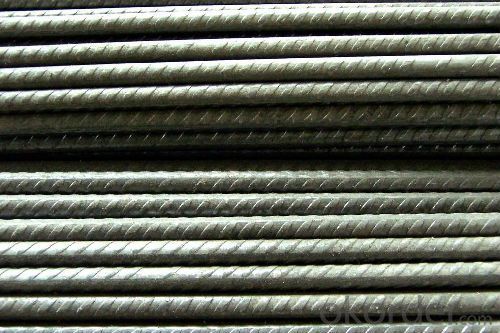
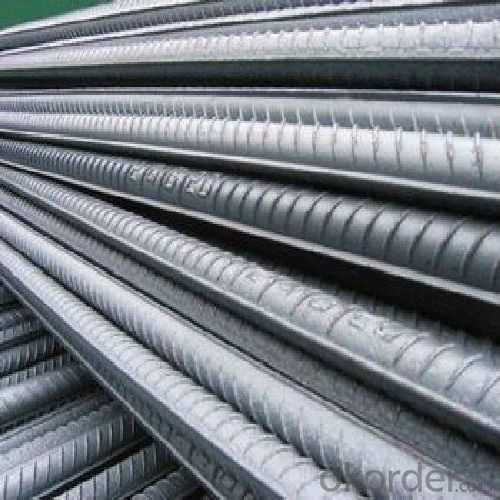
- Q:Can steel sheets be used for conveyor belts?
- Yes, steel sheets can be used for conveyor belts. Steel is a versatile and durable material that can withstand heavy loads and high temperatures, making it suitable for conveyor belt applications. Steel sheets can be fabricated into various shapes and sizes, allowing for customization based on the specific conveyor system requirements. Additionally, steel sheets offer excellent resistance to wear, impact, and corrosion, ensuring a longer lifespan for the conveyor belt. Overall, steel sheets provide a reliable and robust solution for conveyor belt applications in industries such as manufacturing, mining, and logistics.
- Q:Can steel sheets be used for agricultural equipment?
- Agricultural equipment can indeed utilize steel sheets. Steel, a flexible and long-lasting substance, is frequently employed in the construction of diverse agricultural machinery and equipment. Its notable features include robustness, rigidity, and resistance against wear and tear, which make it ideal for demanding tasks in the farming and agriculture sectors. Steel sheets can be utilized to produce a wide range of agricultural equipment, including plows, cultivators, seeders, harvesters, trailers, and storage containers. These tools necessitate durable materials that can withstand the challenging conditions of the agricultural environment, including exposure to soil, moisture, and heavy loads. Steel sheets are capable of being shaped and manipulated into various forms and sizes, thus allowing for the customization of agricultural equipment to meet specific requirements. Furthermore, steel can be easily welded, ensuring the structural integrity of the equipment and facilitating repairs, if needed. Moreover, steel sheets can undergo coating or galvanization to enhance their resistance against corrosion. This additional measure further augments their longevity and durability when employed in agricultural applications. Consequently, the equipment is safeguarded against rust and deterioration brought about by exposure to diverse weather conditions and chemicals typically found in farming activities. In summary, steel sheets represent a suitable material for agricultural equipment due to their strength, durability, and versatility. Their incorporation into the production of agricultural machinery guarantees dependable and efficient performance, thereby contributing to the productivity and success of farming operations.
- Q:Can steel sheets be used for HVAC ductwork?
- Yes, steel sheets can be used for HVAC ductwork. Steel is a common material used in ductwork due to its strength, durability, and fire resistance properties. It is capable of withstanding high temperatures and can be easily fabricated into various shapes and sizes to meet specific HVAC system requirements.
- Q:Are steel sheets susceptible to rusting?
- Yes, steel sheets are susceptible to rusting. Steel is primarily made up of iron, which is a metal that naturally reacts with oxygen in the presence of moisture to form iron oxide, also known as rust. This means that if steel sheets are exposed to water or moisture, they can begin to rust over time. However, there are methods to prevent or slow down the rusting process, such as applying protective coatings or using stainless steel, which contains elements like chromium that provide additional resistance to corrosion.
- Q:Can the steel sheets be easily joined with adhesive?
- Indeed, adhesive is capable of easily joining steel sheets. The method of adhesive bonding is widely employed in connecting steel sheets due to its numerous benefits. Adhesives create a robust and long-lasting bond between the sheets, resulting in a seamless connection. Furthermore, they distribute stress evenly across the joint, thereby reducing the likelihood of failure. Moreover, adhesive bonding does not necessitate heat or specialized equipment, making it a cost-effective and efficient solution. However, it is crucial to carefully choose the appropriate adhesive for the specific type of steel, and proper surface preparation is essential to ensure optimal adhesion. All in all, when executed correctly, adhesive bonding effectively joins steel sheets together.
- Q:Can steel sheets be used for storage cabinets or lockers?
- Yes, steel sheets can be used for storage cabinets or lockers. Steel is a durable and strong material that is commonly used in the construction of cabinets and lockers due to its resistance to corrosion, fire, and impact. Additionally, steel provides security and longevity, making it an ideal choice for storage solutions.
- Q:What are the different grades of steel sheets available?
- There exists a variety of steel sheet grades, each possessing its own distinctive properties and applications. Among the commonly utilized grades are: 1. Carbon Steel: This grade of steel sheet is the most prevalent and extensively employed. It comprises varying carbon levels and is renowned for its robustness and durability. Carbon steel sheets find utility across diverse sectors, including construction, automotive, and manufacturing. 2. Stainless Steel: Distinguished by its elevated chromium content, this steel sheet grade showcases outstanding resistance to corrosion. Industries such as food processing, chemical, and medical frequently employ stainless steel sheets where corrosion resistance plays a pivotal role. 3. Galvanized Steel: To shield against corrosion, this type of steel sheet is coated with a layer of zinc. Galvanized steel sheets often serve in outdoor settings, such as roofing, fences, and gutters, where exposure to moisture and the elements is commonplace. 4. Alloy Steel: By incorporating additional elements like manganese, nickel, or chromium, this grade of steel sheet enhances its mechanical properties. Alloy steel sheets are extensively used in applications demanding heightened strength, such as construction equipment, aircraft components, and machinery. 5. Tool Steel: Designed with elevated hardness and wear resistance, this grade of steel sheet is ideal for tools and dies. Industries such as automotive, aerospace, and manufacturing frequently employ tool steel sheets. It's crucial to note that these represent only a fraction of the available steel sheet grades, as numerous specialized grades are tailored to specific applications. The choice of grade depends on factors such as desired strength, corrosion resistance, and specific application requirements.
- Q:What is the price range of steel sheets?
- The price range of steel sheets can vary depending on several factors such as the type and grade of steel, the thickness and size of the sheet, and the market conditions. Generally, the price range for steel sheets can range from around $0.60 to $1.50 per pound. However, it is essential to keep in mind that these prices are approximate and can change frequently due to fluctuations in the steel market and other economic factors. It is advisable to check with local suppliers or online platforms to get the most accurate and up-to-date pricing information for steel sheets.
- Q:What are the different bending radius options for steel sheets?
- The bending radius options for steel sheets can vary depending on the thickness and type of steel being used. Generally, the bending radius for steel sheets ranges from 0.5 to 2 times the thickness of the sheet. For thinner sheets, such as those with a thickness of 0.5mm to 2mm, a bending radius of 0.5 to 1 times the sheet thickness is typically recommended. This allows for a tighter bend without risking cracking or deformation of the steel. For thicker sheets, such as those with a thickness of 2mm to 6mm, a bending radius of 1 to 1.5 times the sheet thickness is commonly used. This ensures that the steel retains its structural integrity and prevents any excessive stress or strain during the bending process. For even thicker sheets, typically above 6mm, a bending radius of 1.5 to 2 times the sheet thickness is often required. This larger bending radius helps to avoid any potential damage or distortion to the steel, ensuring a successful bending operation. It is important to note that these bending radius options are general guidelines and may vary depending on the specific steel grade, composition, and intended application. It is always recommended to consult the manufacturer's recommendations or seek expert advice when determining the appropriate bending radius for steel sheets.
- Q:What is the typical price range for steel sheets?
- The typical price range for steel sheets can vary depending on factors such as size, thickness, grade, and market conditions. However, generally speaking, steel sheets can range in price from around $20 to $200 per sheet.
1. Manufacturer Overview |
|
|---|---|
| Location | |
| Year Established | |
| Annual Output Value | |
| Main Markets | |
| Company Certifications | |
2. Manufacturer Certificates |
|
|---|---|
| a) Certification Name | |
| Range | |
| Reference | |
| Validity Period | |
3. Manufacturer Capability |
|
|---|---|
| a)Trade Capacity | |
| Nearest Port | |
| Export Percentage | |
| No.of Employees in Trade Department | |
| Language Spoken: | |
| b)Factory Information | |
| Factory Size: | |
| No. of Production Lines | |
| Contract Manufacturing | |
| Product Price Range | |
Send your message to us
Deformed Bar Hot Rolled High Quality 6mm-50mm ASTM or BS4449
- Loading Port:
- China Main Port
- Payment Terms:
- TT or LC
- Min Order Qty:
- -
- Supply Capability:
- -
OKorder Service Pledge
OKorder Financial Service
Similar products
New products
Hot products
Hot Searches
Related keywords

